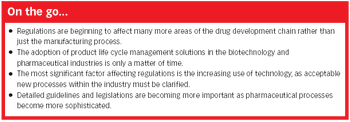
During the past two decades, regulations have evolved in both Europe and the US to accommodate the technological developments in the pharmaceutical, biotechnology and medical device industries.

During the past two decades, regulations have evolved in both Europe and the US to accommodate the technological developments in the pharmaceutical, biotechnology and medical device industries.

The US Food and Drug Administration has awarded the National Institute for Pharmaceutical Technology and Education (NIPTE), a not-for-profit organization comprising 11 universities, a $1.19 million contract to develop quality by design (QbD) guidance elements for design space and scale-up of unit operations.

Also, Maxygen looks to costs, jobs; Receptor BioLogix appoints Dale R. Pfost CEO; more...

Pfizer and UCB formed a technology company named Cyclofluidic with the aim of accelerating the drug-discovery process.

Also, MedImmune opens Cambridge, UK, facility and makes reverse engineering pact with Omninvest; BD Medicine appoints Carol Adiletto VP of clinical and regulatory affairs; more...

Also, Millipore opens new membrane-casting manufacturing facility in Ireland; Surface Logix appoints Keith Dionne president, CEO, and a member of the board; more...

Also, Merck & Co. discontinues development of its obesity drug taranabant; Synthetech names Frederic Farkas director of manufacturing; more...

The European Fine Chemicals Group (EFCG) and the International Pharmaceutical Excipents Council of Europe (IPEC Europe) announced the formation of a European Pharmaceutical Excipients Certification Project to develop advocacy and stakeholder management in Europe and to give advice to two European working teams as part of an effort to develop a certification program for manufacturers and distributors of pharmaceutical excipients.

The pharmaceutical industry faces compliance with the REACH regulation, the European Union's regulation on chemicals and their safe use. Fully understanding the requirements, achieving compliance, and developing strategies for working with suppliers are key for avoiding interruption of the supply chain.
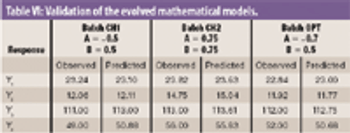
The authors studied the effect of the combination of binders on the flow and compressibility characteristics of the agglomerates of binary combination of lactose and dibasic calcium phosphate dihydrate.
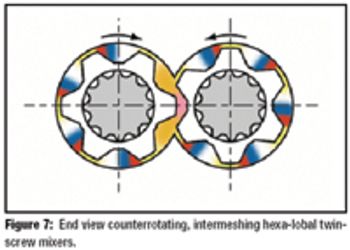
The author describes the benefits, processes, and practicality of using hot-melt extrusion to mix active pharmaceutical ingredients with pharmaceutical-grade polymers.

Advancements add yet another challenge for industry's already overextended regulatory body.

This article summarizes the classification systems for topical liquid and semisolid dosage forms used for dermatological application and notes some differences between FDA and USP classification.

Emerging pharmaceutical companies represent an important client base for CROs and CMOs. Lessons learned for successful customer–supplier relations.
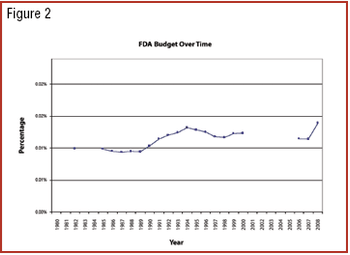
Can previous trends of Democratic and Republican administrations predict industry's future?

Cycle design and robustness testing using advanced process analytical technology.

Also, Alpharma advises shareholders to reject King's offer; ImClone rejects raised BMS offer; Immunogen appoints Daniel M. Junius, more...
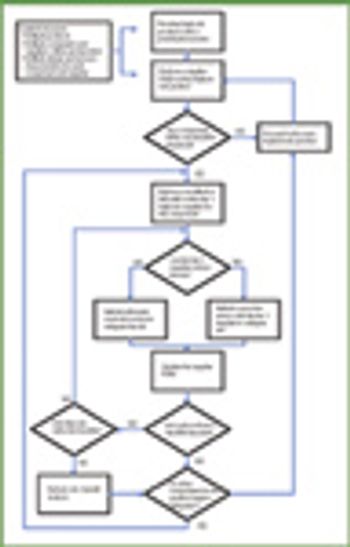
The growth and globalization of the pharmaceutical supply chain make risk assessment more important than ever for pharmaceutical manufacturers. The authors describe a program to identify, prioritize, mitigate, and communicate risks in manufacturer–supplier relationships.

Securing the integrity of the excipient supply chain is a crucial task in ensuring the overall pharmaceutical supply chain. The authors outline excipient-control strategies and practices for the manufacture, distribution, and receipt of excipients.

The design of accurate and robust analytical methodology is instrumental to developing orally inhaled and nasal drug products (OINDPs) and their appropriate control programmes.
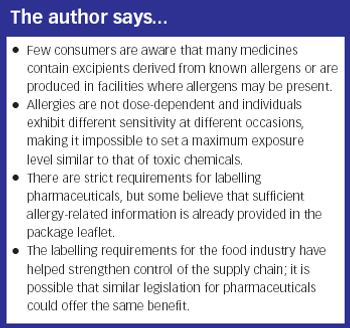
The biggest benefit that has been brought about by the compulsory labelling of allergens in food is the greater degree of cooperation that has been established between food manufacturers and their suppliers.

Nanoparticles can also cross the blood–brain barrier, which could make them useful for delivering drugs that target brain tumours or diseases that affect the central nervous system.

The potent nature of HPAPIs means there must be careful evaluation of the compound for its level of toxicity when considering manufacture.
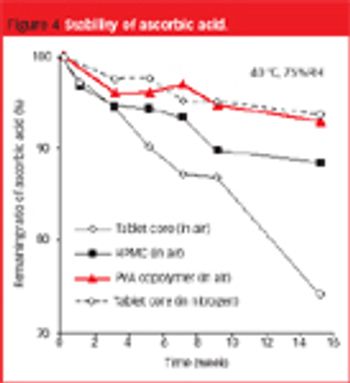
The use of PVA copolymer-based film can solve the problems associated with lack of film adhesion... to tablets containing large amounts of waxy excipient or a lubricant.

Also, Zentiva accepts Sanofi's increased takeover bid, Oriel Therapeutics appoints Richard Fuller CEO, more...